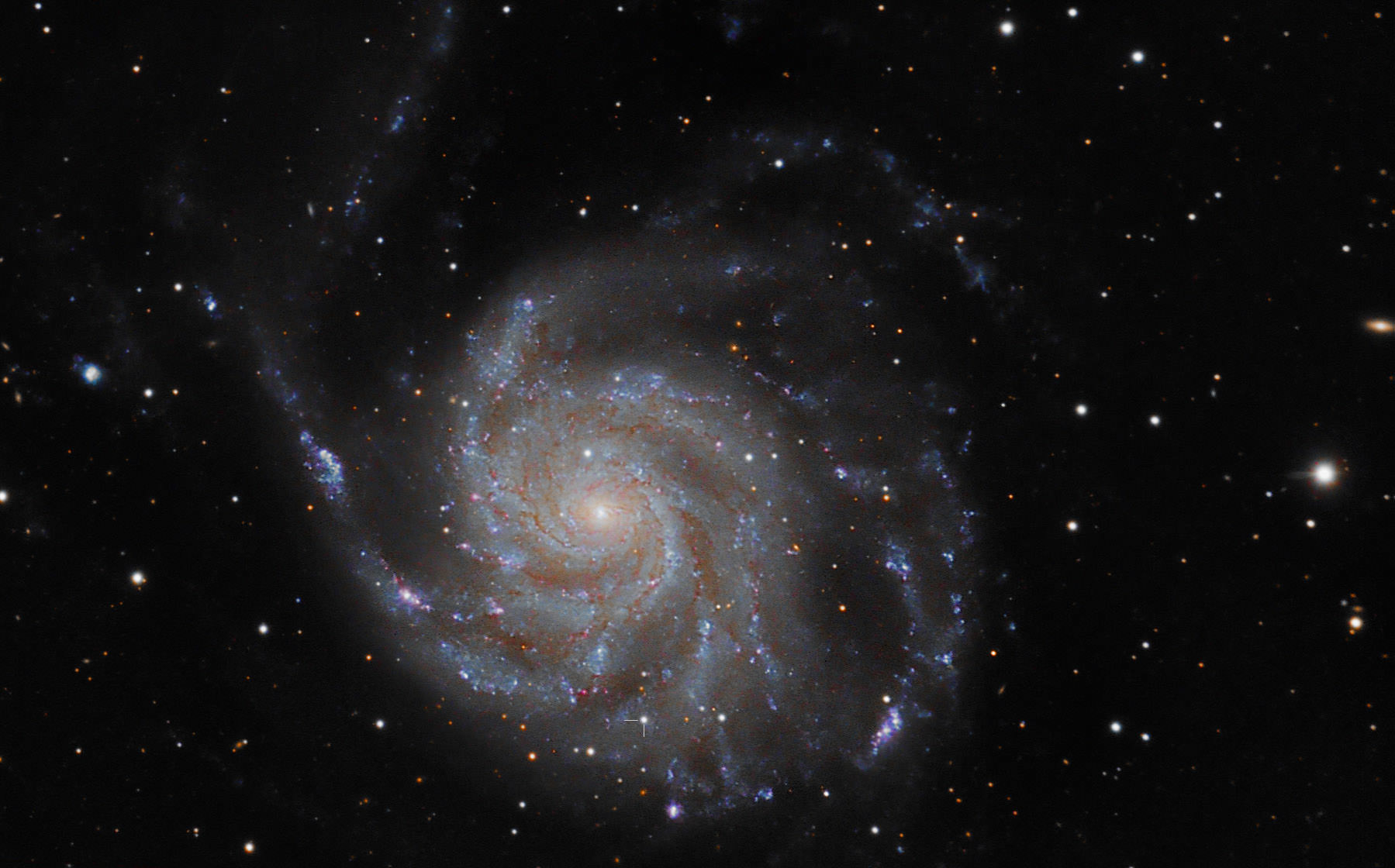

Supernova PTF11kly in M101. Credit: Rick Johnson
[/caption]
When discovered on August 24, 2011, supernova 2011fe was the closest supernova since the famous SN 1987A. Located in the relatively nearby Pinwheel galaxy (M101), it was a prime target for scientists to study since the host galaxy has been well studied and many high resolution images exist from before the explosion, allowing astronomers to search them for information on the star that led to the eruption. But when astronomers, led by Weidong Li, at the University of California, Berkeley searched, what they found defied the typically accepted explanations for supernovae of the same type as 2011fe.
SN 2011fe was a type 1a supernova. This class of supernova is expected to be caused by a white dwarf which accumulates mass contributed by a companion star. The general expectation is that the companion star is a star evolving off the main sequence. As it does, it swells up, and matter spills onto the white dwarf. If this pushes the dwarf’s mass over the limit of 1.4 times the mass of the Sun, the star can no longer support the weight and it undergoes a runaway collapse and rebound, resulting in a supernova.
Fortunately, the swollen up stars, known as red giants, become exceptionally bright due to their large surface area. The eighth brightest star in our own sky, Betelgeuse, is one of these red giants. This high brightness means that these objects are visible from large distances, potentially even in galaxies as distant as the Pinwheel. If so, the astronomers from Berkeley would be able to search archival images and detect the brighter red giant to study the system prior to the explosion.
But when the team searched the images from the Hubble Space Telescope which had snapped pictures through eight different filters, no star was visible at the location of the supernova. This finding follows a quick report from September which announced the same results, but with a much lower threshold for detection. The team followed up by searching images from the Spitzer infrared telescope which also failed to find any source at the proper location.
While this doesn’t rule out the presence of the contributing star, it does place constraints on its properties. The limit on brightness means that the contributor star could not have been a luminous red giant. Instead, the result favors another model of mass donation known as a double-degenerate model
In this scenario, two white dwarfs (both supported by degenerate electrons) orbit one another in a tight orbit. Due to relativistic effects, the system will slowly lose energy and eventually the two stars will become close enough that one will become disrupted enough to spill mass onto the other. If this mass transfer pushes the primary over the 1.4 solar mass limit, it would trigger the same sort of explosion.
This double degenerate model does not exclusively rule out the possibility of red giants contributing to type Ia supernovae, but recently other evidence has revealed missing red giants in other cases.
Astronomers have been battling threats to their clear skies on all fronts lately. One of…
If you were Captain of the first USS Enterprise, where would you go!? Humanity is…
Now is the best time to observe Mars in 2025. Mars from 2014. Credit: Paul…
Scheduled for launch in 2027, the Nancy Grace Roman Telescope is slowly being readied for…
Few places in the solar system are better suited to a balloon than Titan. The…
We reported before about a NIAC-funded project known as the Lofted Environment and Atmospheric Venues…